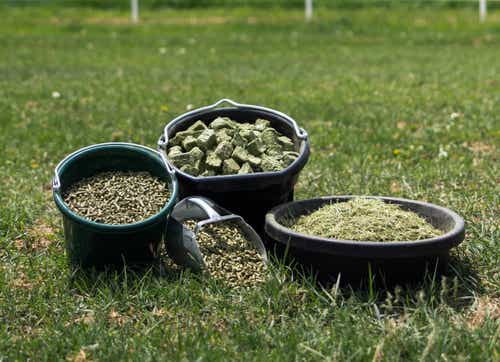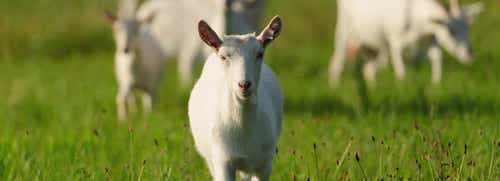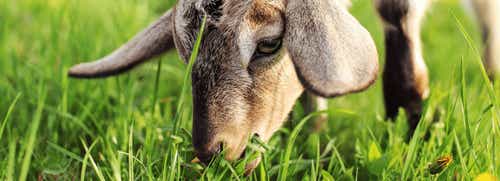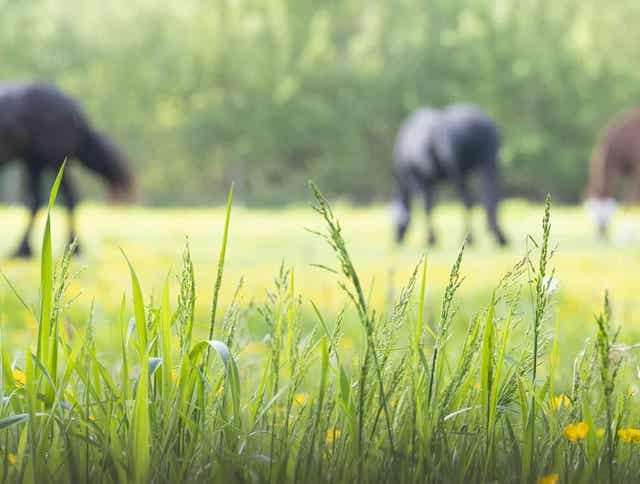
Changing Equine Behavior with Forage
Forage plays a critical role in equine behavior and training. Countless common behavioral problems and stereotypical behaviors can develop due to a lack of forage in a horse’s diet. Horses are grazing and foraging animals, spending an estimated seventeen hours a day consuming different kinds of plants and grasses in small quantities. Everything about them is designed to consume their food in this way, including their stomachs, which produce stomach acid almost continuously.
However, in many domestic environments, horses are often restricted in their consumption of forage, in quantity and/or duration, in favor of feeding concentrated feeds to supply their nutritional requirements. This type of feeding program is easier for caregivers in many ways, but in other ways, makes our lives and that of our horses, more stressful and complicated.
“Boredom” Behaviors to Look Out For:
- Pawing
- Pacing
- Weaving
- Head Bobbing
“Boredom” behaviors often stem from the frustration and stress around being restricted from performing natural behaviors, such as grazing. A simple “training” solution might be to provide access to forage to allow for natural grazing behavior to take place.
Simply tying a hay net where you’ve tied your horse can reduce pawing dramatically, or help them stand still for the farrier. Providing one or more slow feeding hay sources in your horse’s living space may curb, or at least dramatically reduce, weaving and pacing. For senior horses, consider providing fresh, soaked hay pellets frequently throughout the day and night can also provide a similar solution.
Irritable and dangerous behaviors such as girthiness, kicking out when handled, sensitivity to being touched, bucking or bolting under saddle, and spookiness may be the result of all too common equine ulcers. Ulcers and other painful stomach issues, often develop from diets that do not contain adequate access to forage to buffer the sixteen gallons of stomach acid a horse produces each day.
Along with treatment as prescribed by your veterinarian, increasing your horse’s grazing and foraging time throughout the day and night is often the simplest and longest-lasting solution to these behaviors. By providing more forage and increasing the time they take to consume it, you may not only prevent ulcers from developing but actually assist in the healing process. Once the source of pain is resolved, often the problematic behaviors will decrease or go away on their own.
Aggression that’s related to food, directed towards humans or other horses, often stems from restricted forage sources. Bickering in the herd, acting threateningly towards humans during feeding time, banging on stall doors, “biting the hand that feeds” can often be quickly diminished by just providing more access to food more often.
Easy Ways to Reduce Aggression:
- Slow feeding hay dispensers that are never empty
- No more than 2-3 horses per bale feeder
- Larger grazing areas
- More feeding locations than horses
- Food dispensing activities/toys
In general, the idea is that a horse’s stomach should never be empty, and the time they spend restricted from grazing or foraging should be limited. It’s much easier to provide some hay/forage than to fix behavioral issues through training alone. Training may be able to temporarily stop bucking, pawing, pacing, and biting, but if the underlying source is never resolved… the symptom, or perhaps a new one, will inevitably return and the cycle will continue.
At the end of the day, it’s a better use of our time and money, healthier for the horse, and less stressful for everyone involved, for us to make the changes necessary to feed our horses the way they were meant to eat.
Blog post by Adele Shaw of The Willing Equine
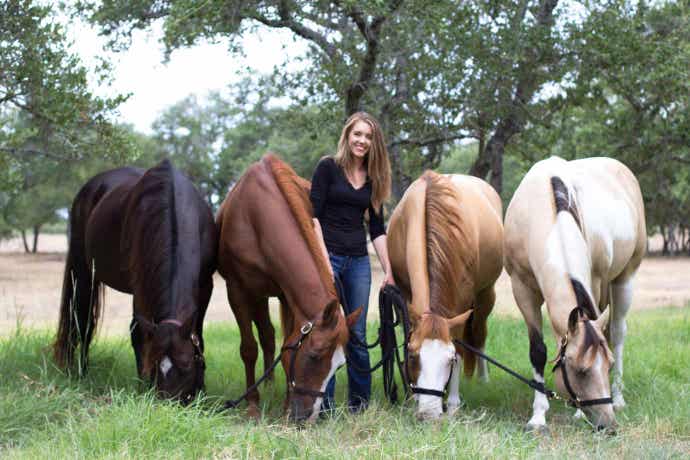
Standlee Premium Products would like to thank Adele Shaw of The Willing Equine for writing this blog for us. Read other fun and educational blogs at thewillingequine.com or like The Willing Equine on Facebook and Instagram.



